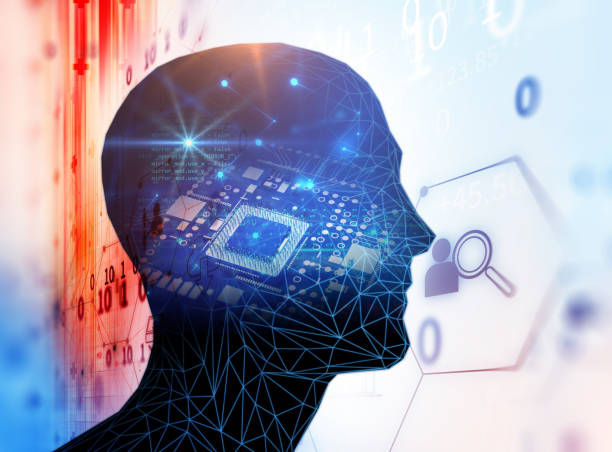What is Artificial Intelligence? Definitions and Basic Concepts

#Artificial_Intelligence (artificial intelligence), also known as AI, is a branch of computer science that deals with creating machines capable of performing tasks that typically require human intelligence.
These tasks include learning, reasoning, problem-solving, perception, and natural language understanding.
In fact, the goal of artificial intelligence is to create systems that can think and act like humans.
Artificial intelligence is not limited to a specific technology, but rather encompasses a set of techniques and approaches.
Among the most important of these techniques are machine learning, neural networks, natural language processing, and computer vision.
These techniques enable machines to learn from data, recognize patterns, and make decisions.
Artificial intelligence can be divided into two main categories: #Narrow_AI (Narrow AI) and #General_AI (General AI).
Narrow AI is designed to perform specific tasks, such as face recognition or language translation.
In contrast, General AI aims to create machines that can perform any task a human can.
Although Narrow AI is currently very advanced and has applications in many fields, General AI is still a long-term goal.
Is your company’s website as professional and trustworthy as it should be? With specialized corporate website design by Rasawweb, create an online presence that reflects your credibility and attracts more customers.
✅ Build a powerful and professional image for your brand
✅ Convert visitors into real customers
⚡ Get a free consultation now!
History of Artificial Intelligence from Inception to Today
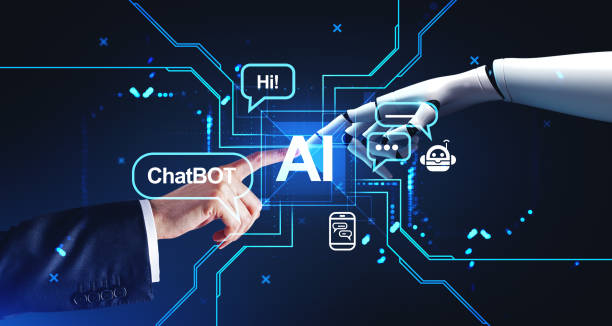
The idea of artificial intelligence dates back to the 1950s, when scientists and mathematicians like Alan Turing and John McCarthy became interested in the possibility of creating machines that could think.
The Dartmouth Conference in 1956 is considered a turning point in the history of AI, as it was there that the term “artificial intelligence” was first used and the main areas of research in this field were defined.
The early decades of AI research were accompanied by much optimism.
Researchers believed they could quickly build machines capable of solving complex problems.
However, progress was slow, and many challenges arose in the development of AI.
One of the most significant problems was the lack of computational power.
Computers of that era were unable to process large volumes of data, which hindered the development of complex machine learning algorithms.
In the 1980s and 1990s, with advancements in hardware and software, artificial intelligence regained attention.
The emergence of neural networks and new machine learning algorithms enabled the solution of more complex problems.
Today, artificial intelligence is employed in many fields, including autonomous vehicles, virtual assistants, face recognition, and fraud detection.
Artificial intelligence continues to evolve and is expected to play an even more significant role in our lives in the future.
Types of Machine Learning Algorithms and Their Applications

Machine learning is a significant subfield of artificial intelligence that enables machines to learn from data without being explicitly programmed.
Machine learning algorithms are diverse, and each is designed to solve specific problems.
Supervised Learning: In this type of learning, the machine is trained using labeled data.
This means that each input data point has a defined output.
Supervised learning algorithms are used for predicting or classifying data.
Examples of supervised learning algorithms include linear regression, logistic regression, and Support Vector Machines (SVM).
Unsupervised Learning: In this type of learning, the machine is trained using unlabeled data.
The goal of unsupervised learning is to discover hidden patterns and structures within the data.
Unsupervised learning algorithms are used for clustering and dimensionality reduction.
Examples of unsupervised learning algorithms include K-Means and Principal Component Analysis (PCA).
Reinforcement Learning: In this type of learning, the machine is trained by interacting with an environment.
The machine learns how to best achieve its goal by performing various actions in the environment and receiving feedback (rewards or penalties).
Reinforcement learning is used to solve problems such as video games and robot control.
Reinforcement Learning
Comparison Table of Machine Learning Algorithms
| Algorithm Type | Description | Applications |
|---|---|---|
| Supervised Learning | Training with labeled data | Prediction, Classification |
| Unsupervised Learning | Training with unlabeled data | Clustering, Dimensionality Reduction |
| Reinforcement Learning | Learning through interaction with environment | Video Games, Robot Control |
Artificial Neural Networks: Structure and Function
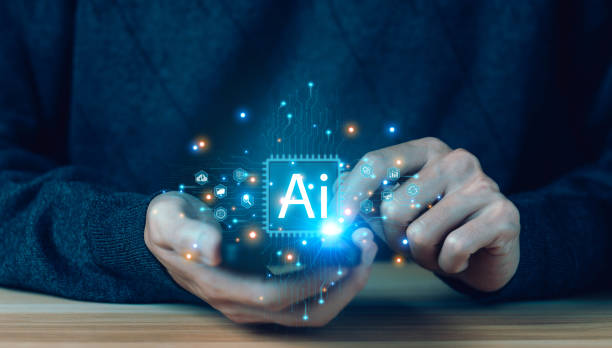
Artificial Neural Networks (ANNs) are computational models inspired by the structure and function of the human brain.
A neural network consists of many nodes (neurons) connected in layers.
Each neuron receives an input, processes it, and produces an output.
The connections between neurons have weights that are adjusted during the learning process.
Neural networks are used to solve complex problems such as image recognition, speech recognition, and natural language processing.
They are capable of learning intricate patterns from data and can make accurate predictions.
One well-known type of neural network is Deep Neural Networks, which consist of many layers.
Deep neural networks have made significant progress in recent years and have achieved excellent results in many fields.
Artificial neural networks have become one of the main tools in the development of artificial intelligence and play a crucial role in the advancement of this field.
Neural network learning, improved accuracy, and …
are key capabilities of these intelligent systems.
Are you missing business opportunities because of an outdated website? With Rasawweb, permanently solve the problem of not attracting potential customers through your website!
✅ Attract more high-quality leads
✅ Increase brand credibility in the eyes of customers
⚡ Get a free corporate website design consultation
Natural Language Processing and Understanding Text Meaning

Natural Language Processing (NLP) is a branch of artificial intelligence that enables machines to understand and process human language.
The goal of natural language processing is to create systems that can read texts, analyze them, and answer questions.
Natural language processing involves a set of techniques and algorithms used to analyze the structure and meaning of language.
These techniques include syntactic analysis (Parsing), semantic analysis, and natural language generation.
Natural language processing has applications in many fields, including machine translation, text summarization, and question answering.
One of the main challenges in natural language processing is understanding the meaning of text.
Human language is complex and ambiguous, and machines must be able to discern subtle differences in meaning.
However, with recent advancements in deep learning, machines have become much better at understanding text meaning.
Natural language processing is rapidly advancing and is expected to play a more significant role in human-machine interaction in the future.
Artificial intelligence plays a crucial role here
Applications of Artificial Intelligence in Various Industries

Artificial intelligence is currently being employed in many different industries and has a significant impact on how tasks are performed.
In the healthcare industry, AI is used for diagnosing diseases, developing drugs, and providing personalized care.
In the financial industry, AI is used for fraud detection, risk management, and customer service.
In the manufacturing industry, AI is used for process optimization, quality control, and predictive maintenance.
In the transportation industry, AI is used for developing self-driving cars and optimizing routes.
In the retail industry, AI is used to provide personalized recommendations to customers and enhance the shopping experience.
These are just a few examples of AI applications in various industries.
With further advancements in this field, AI is expected to play an even more significant role across all industries in the future.
Artificial intelligence plays a crucial role here.
The use of artificial intelligence in medicine or industry can significantly increase efficiency and accuracy.
Artificial intelligence plays a crucial role here.
The use of artificial intelligence in medicine or industry can significantly increase efficiency and accuracy.
Challenges and Limitations of Artificial Intelligence
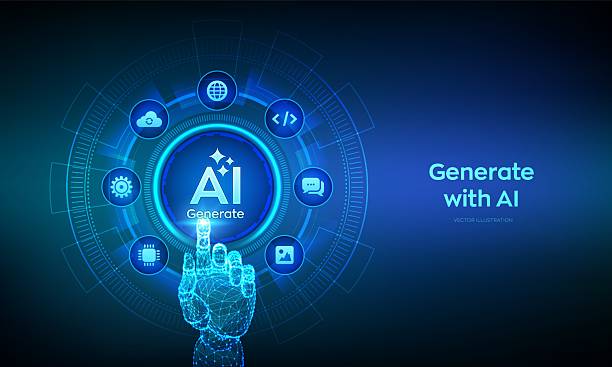
Although artificial intelligence has made significant progress, it still faces many challenges and limitations.
One of the most important challenges is the lack of training data.
Machine learning algorithms require large volumes of data to learn complex patterns.
In many cases, collecting sufficient high-quality data is difficult.
Another challenge is the issue of interpretability.
Deep neural networks are very complex, and understanding how a specific decision was made is difficult.
This can reduce trust in AI systems.
Furthermore, AI systems may have bias.
If training data contains bias, AI systems will learn this bias and make decisions that are unfair or discriminatory.
Table of AI Challenges
| Challenge | Description |
|---|---|
| Data Scarcity | Need for large volumes of training data |
| Interpretability | Difficulty in understanding neural network decisions |
| Bias | Presence of bias in training data |
Despite these challenges, artificial intelligence still holds great potential to improve our lives.
By striving to solve these challenges, we can fully benefit from the advantages of artificial intelligence.
Artificial intelligence plays a crucial role here.
The Future of Artificial Intelligence: Opportunities and Threats
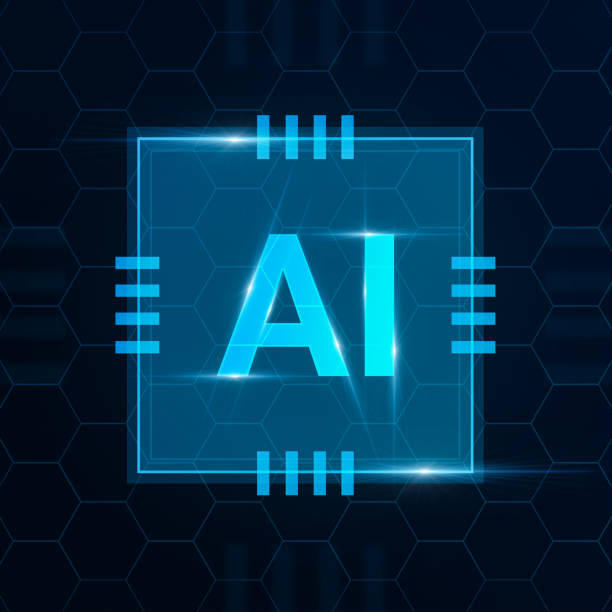
The future of artificial intelligence is full of opportunities and threats.
On one hand, AI can help solve many global problems, including climate change, incurable diseases, and poverty.
AI can help us live healthier, longer, and more prosperous lives.
On the other hand, AI can also bring risks.
If AI is not managed properly, it could lead to job losses, increased inequality, and even the destruction of humanity.
One of the main concerns is the issue of AI control.
If machines become more intelligent than humans, we might no longer be able to control them.
This could lead to catastrophic consequences.
However, many experts believe that by developing appropriate laws and regulations, the risks of AI can be mitigated, and its benefits can be fully utilized.
Artificial intelligence plays a crucial role here.
Given the importance of AI in the future, it is essential that we are aware of it and prepare to face its challenges and opportunities.
Artificial intelligence should serve humanity, not the other way around.
Did you know that customers’ first impression of your company is your website? With a powerful corporate site from Rasawweb, multiply your business credibility!
✅ Custom and eye-catching design tailored to your brand
✅ Improved user experience and increased customer attraction
⚡ Get a free consultation!
Artificial Intelligence and Ethics: Important Considerations
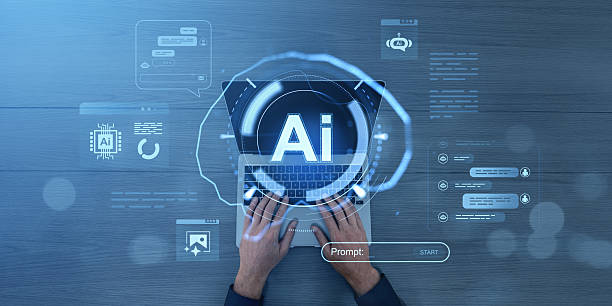
With the widespread use of artificial intelligence, ethical issues related to it are also gaining more importance.
One of the most important ethical issues is accountability.
If an AI system makes a decision that leads to harm, who is responsible? The system developer, the system user, or the system itself?
Another issue is transparency.
AI systems should be designed so that their decisions are explainable and understandable.
This allows people to trust and effectively use AI systems.
Furthermore, the misuse of artificial intelligence must be prevented.
AI should not be used for malicious purposes such as espionage, false advertising, or the production of autonomous weapons.
Artificial intelligence plays a crucial role here.
Given the importance of ethical issues related to artificial intelligence, it is essential to discuss and find solutions for them.
We must ensure that artificial intelligence is developed and used ethically and responsibly.
Artificial intelligence plays a crucial role here.
How Can We Coexist with Artificial Intelligence?

Coexistence with artificial intelligence requires a change in our attitudes and behaviors.
We must accept that AI has become a part of our lives and, instead of resisting it, we should try to benefit from its advantages.
We need to learn new skills that help us work alongside AI systems.
These skills include technical skills like programming and data analysis, as well as soft skills like critical thinking and problem-solving.
We must note that artificial intelligence should not replace humans, but rather be used as a tool to assist humans.
We should use AI for repetitive and tedious tasks and dedicate our time and energy to creative and innovative work.
Artificial intelligence plays a crucial role here.
Finally, we must interact with artificial intelligence with caution and responsibility.
We must be aware of its risks and strive to prevent its misuse.
Through cooperation and empathy, we can coexist peacefully with artificial intelligence and fully benefit from its advantages.
Artificial intelligence plays a crucial role here, and AI has a bright future.
Frequently Asked Questions
| Question | Answer |
|---|---|
| What is Artificial Intelligence? | It is the simulation of human intelligence in machines programmed to think like humans and imitate their actions. |
| What are the main branches of Artificial Intelligence? | They include machine learning, deep learning, natural language processing, computer vision, and robotics. |
| What is Machine Learning? | It is a branch of artificial intelligence that focuses on enabling systems to learn from data and identify patterns without explicit programming. |
| Mention examples of AI applications in our daily lives. | Voice assistants (such as Siri and Alexa), recommendation systems in Netflix and Amazon, self-driving cars, and facial recognition programs. |
| What is Deep Learning? | It is a subset of machine learning that uses multi-layered (deep) artificial neural networks to process large amounts of data. |
| What is Natural Language Processing (NLP)? | It is a branch of artificial intelligence that focuses on enabling computers to understand, interpret, and generate human language. |
| What are some ethical concerns related to Artificial Intelligence? | They include data bias, privacy, job displacement, and accountability in case of errors. |
| What are the main benefits of Artificial Intelligence? | Increased efficiency, improved decision-making, automation of repetitive tasks, and discovery of complex patterns in data. |
| How is Artificial Intelligence used in healthcare? | In disease diagnosis, drug discovery, medical image analysis, and personalized patient care. |
| How do you see the future of Artificial Intelligence? | It is expected to continue evolving rapidly, affecting all aspects of human life, from industry to education and entertainment. |
And other advertising agency services by Rasaweb in the field of advertising
- Smart Digital Advertising: An innovative service to increase website traffic through precise audience targeting.
- Smart Digital Branding: An effective tool for digital branding with the help of custom programming.
- Smart Content Strategy: A new service to improve SEO ranking by using real data.
- Smart Social Media: A creative platform to improve customer behavior analysis with custom programming.
- Smart Website Development: A combination of creativity and technology to attract customers by optimizing key pages.
And hundreds of other services in the field of internet advertising, advertising consultation, and organizational solutions
Internet Advertising | Advertising Strategy | Advertorial
References
What is Generative AI?
Impact of Artificial Intelligence on the Job Market
Iran’s Ideal Vision in Artificial Intelligence and Its Global Position
Artificial Intelligence on Persian Wikipedia
? To reach the pinnacle of success in the digital world, Rasawweb Afarin is by your side with professional responsive website design and digital marketing services.
📍 Tehran, Mirdamad Street, next to Central Bank, Southern Kazeroun Alley, Ramin Alley, No. 6

